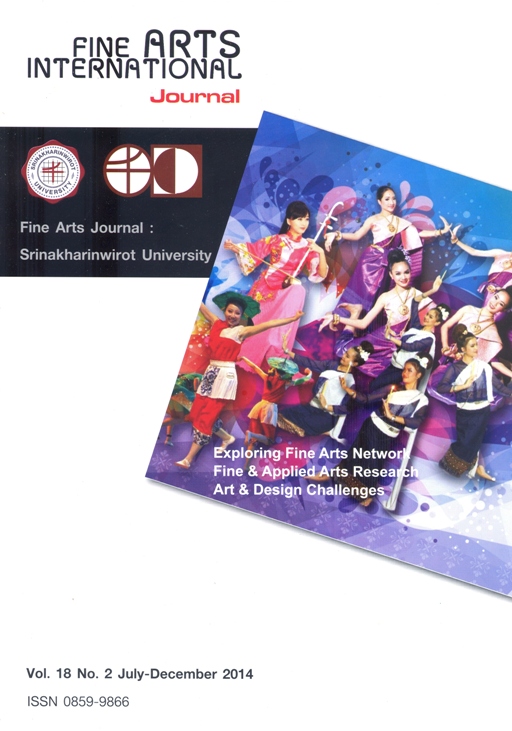Biometric Personal Authentic for Bio-Nonwoven Fashion : Biometric Personal (DNA ink) on Bacterial Cellulose Textile for Nonwoven Fashion Industry
Keywords:
Thai rice, Biometric Authentication, Bacterial cellulose, Green philosophy, Nonwovenfabric, Nanofibers, DNA, DNA-ID ink, Recycle, SustainableAbstract
Bio-nonwoven and Nanofiber fabrics of pure cellulose can be made from some bacteria such as Acetobacterxylinum. Bacterial cellulose fibers are very pure, 10 nm in diameter and about 0.5 micron long. The bacterial cellulose is similar to that of plant cellulose; however instead of being a product of plants, the cellulose was produced by millions of tiny bacteria from rice grown in Bioreactors LAB, providing an ecologically refreshing alternative to cotton or silk.
These fibers are very stiff and they have high strength, high porosity, and nanofiber structure. They can potentially be produced in industrial quantities at greatly reduced cost and significantly less water content, with triple the yield by a new process. The cost of production of the fabric is very low: one kilo of rice can produce up to 50 A4- sheets of fabric, thickness being around 0.3 mm. As an organic fabric, the impact on the environment is close to none. As far as durability is concerned, as long as it is preserved in a dry place, it could last forever, just like linen found on mommies in their tombs.
Development of biometric authentication technologies has progressed rapidly in the last few years. Personal authentication devices based on unique patterns of fingerprints, the iris, or subcutaneous veins in the wrist have been commercialized for personal use, such as in the verification of user log-ins at computer terminals. Facial recognition, voice dynamics, and handwriting analysis are also being used in criminal investigation. All of these methods of verification match analog patterns. Among the various types of biometric information, the DNA-ID presented here should prove the most reliable for personal identification. DNA information is intrinsically digital and does not change either during a person’s life or after his or her death.
Today there are commercial, technological solutions available to provide a means to identify the supply of genuine products by using biometric DNA ink for authentication technology applied to the fabric.
Because direct dyes can be absorbed, the DNA ink can easily be added while the cellulose is produced.
The main purpose of mixing DNA ink with bio non-woven fabric is that, in the distant future, it could be possible to retrieve biometric personal information in such fabrics to recreate DNA from deceased people, and even be cloned if such technology is available.It could also be used in order to identify an artist’s work: if each artist had his DNA information on his artwork, it could be then genuinely identified as authentic.






